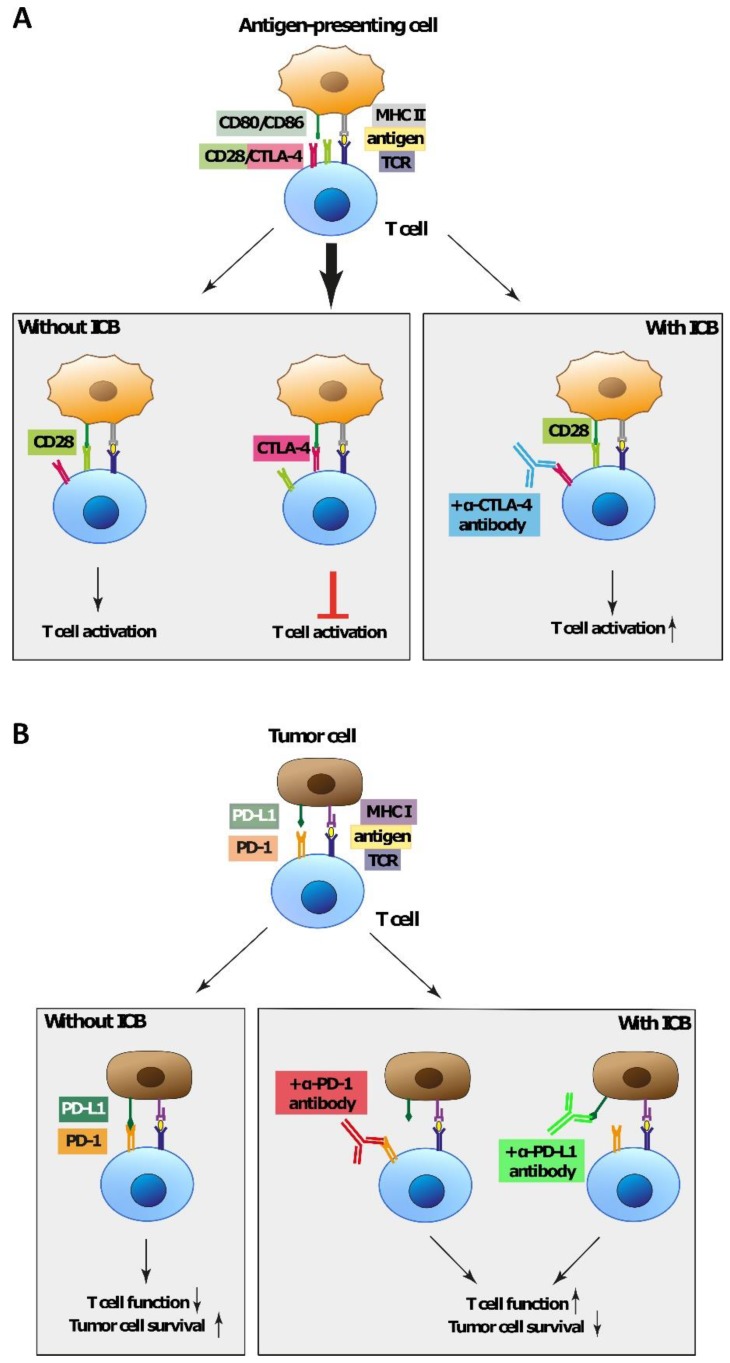Figure 1.
Molecular mechanism of immune checkpoints. (a) CTLA-4 is a critical negative regulator of the T cell response in the early activation phase of the adaptive immune response. It binds to the costimulatory ligands CD80 and CD86 on antigen-presenting cells with a higher affinity than CD28 and thereby prevents their interaction with CD28 and subsequent T cell activation. Anti-CTLA-4 antibodies block the interaction of CTLA-4 and CD80/86 and boost T cell activation and the anti-tumor response. (b) The PD-1–PD-L1 axis is an important mechanism to avoid tissue damage from autoreactive T cells and maintains the peripheral tolerance. Binding of PD-L1 to its receptor PD-1 blocks T cell receptor (TCR) signaling, resulting in limited T cell function. Antibodies targeting PD-1 or its ligand PD-L1 are able to inhibit their interaction and prevent the inactivation of tumor-reactive immune cells.

